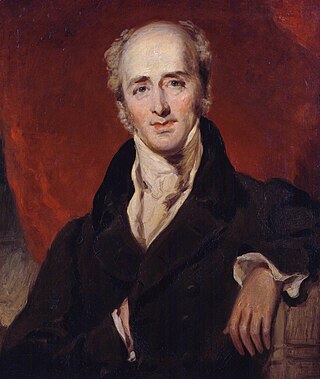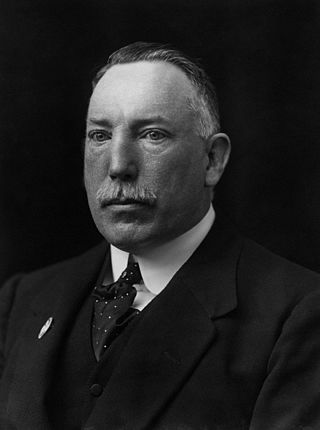
The 1832 United Kingdom general election was held on 8 December 1832 to 8 January 1833, to elect members of the House of Commons, the lower house of Parliament of the United Kingdom. It was the first held in the Reformed House of Commons following the Reform Act, which introduced significant changes to the electoral system.
Armagh or County Armagh is a former county constituency in the House of Commons of the United Kingdom. It was a two-member constituency in Ireland from 1801 to 1885 and a single-member constituency in Northern Ireland from 1922 to 1950. It was replaced in boundary changes in 1983.

The 1945 Northern Ireland general election was held on 14 June 1945. The election saw significant losses for the Ulster Unionist Party, though they retained their majority.

The 1965 Northern Ireland general election was held on 25 November 1965. Like all previous elections to the Parliament of Northern Ireland, it produced a large majority for the Ulster Unionist Party.

The 1962 Northern Ireland general election was held on 31 May 1962. While the Ulster Unionist Party lost three seats, they retained a large majority as in all previous elections to the Parliament of Northern Ireland.

The 1958 Northern Ireland general election was called on 27 February by 1st Viscount Brookeborough to be held on 20 March 1958.

The 1949 Northern Ireland general election was held on 19 February 1949. The election became known as the Chapel-gate election because collections were held at churches in the Republic of Ireland to support the Nationalist Party campaign.

The 1938 Northern Ireland general election was held on 9 February 1938. Like all previous elections to the Parliament of Northern Ireland, it produced a large majority for the Ulster Unionist Party, who won three-quarters of the seats.

The 1933 Northern Ireland general election was held on 30 November 1933. Like all previous elections to the Parliament of Northern Ireland, it produced a large majority for the Ulster Unionist Party.

The 1929 Northern Ireland general election was held on 22 May 1929. Like all previous elections to the Parliament of Northern Ireland, it produced a large majority for the Ulster Unionist Party. It was the first held after the abolition of proportional representation and the redrawing of electoral boundaries to create single-seat constituencies. As with the rest of the United Kingdom, this has made it more difficult for independent and minor party candidates to win seats.

South Tyrone was a constituency of the Parliament of Northern Ireland.

North Tyrone was a constituency of the Parliament of Northern Ireland.

The 1922 United Kingdom general election in Northern Ireland was held on 15 November 1922. There were ten constituencies, seven single-seat constituencies with elected by FPTP and three two-seat constituencies with MPs elected by bloc voting. Only two of the constituencies had contested elections.

The 1923 United Kingdom general election in Northern Ireland was held on 6 December as part of the wider general election. There were ten constituencies, seven single-seat constituencies with elected by FPTP and three two-seat constituencies with MPs elected by bloc voting. Only three of the constituencies had contested elections.

The 1924 United Kingdom general election in Northern Ireland was held on 29 October as part of the wider general election in the United Kingdom. There were ten constituencies, seven single-seat constituencies with elected by FPTP and three two-seat constituencies with MPs elected by bloc voting.

The 1929 United Kingdom general election in Northern Ireland was held on 30 May as part of the wider general election. There were ten constituencies, seven single-seat constituencies with elected by FPTP and three two-seat constituencies with MPs elected by bloc voting.

The 1931 United Kingdom general election in Northern Ireland was held on 27 October as part of the wider general election. There were ten constituencies, seven single-seat constituencies with MPs elected by FPTP and three two-seat constituencies with MPs elected by bloc voting.

The 1935 United Kingdom general election in Northern Ireland was held on 14 November as part of the wider general election. There were ten constituencies, seven single-seat constituencies with elected by FPTP and three two-seat constituencies with MPs elected by bloc voting.

The 1950 United Kingdom general election in Northern Ireland was held on 23 February as part of the wider general election. The Representation of the People Act 1948 reorganised constituencies: all MPs were now elected single-seat constituencies using FPTP, ending the two-seat constituencies which had been in place till then, and the university constituency of Queen's University of Belfast was abolished.

The 1951 United Kingdom general election in Northern Ireland was held on 25 October as part of the wider general election with 12 MPs elected in single-seat constituencies using first-past-the-post.














